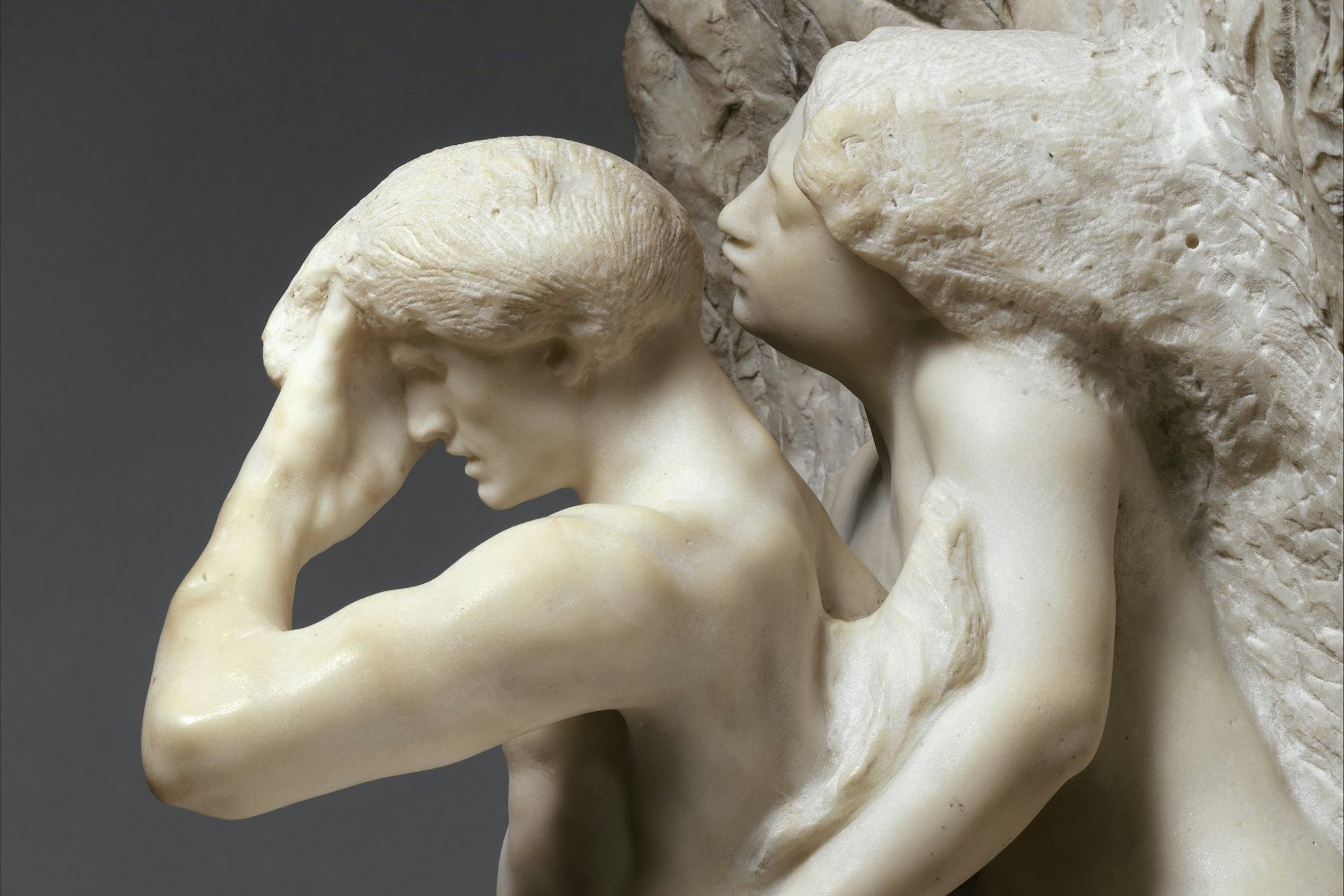Eurydice

Orpheus and Eurydice by Auguste Rodin (modeled ca. 1887, carved 1893)
The Metropolitan Museum of ArtPublic DomainOverview
Eurydice was the name of the doomed wife of the musician Orpheus. Described as a nymph in later literature, Eurydice was usually said to have died because of a snakebite on the eve of her wedding. Heartbroken, Orpheus went to the Underworld, where he convinced Hades and Persephone to restore his bride to him; however, Orpheus failed to follow the terms set by the Underworld gods and ultimately lost Eurydice forever.
Though the myth of Eurydice was probably quite old, evidence for it is fairly late (the name does not even appear in literature until the fourth century BCE). The sad tale has become one of the most familiar and enduring myths of ancient Greece, and continues to inspire artistic and literary adaptations.[1]